Physical Address
304 North Cardinal St.
Dorchester Center, MA 02124
Physical Address
304 North Cardinal St.
Dorchester Center, MA 02124
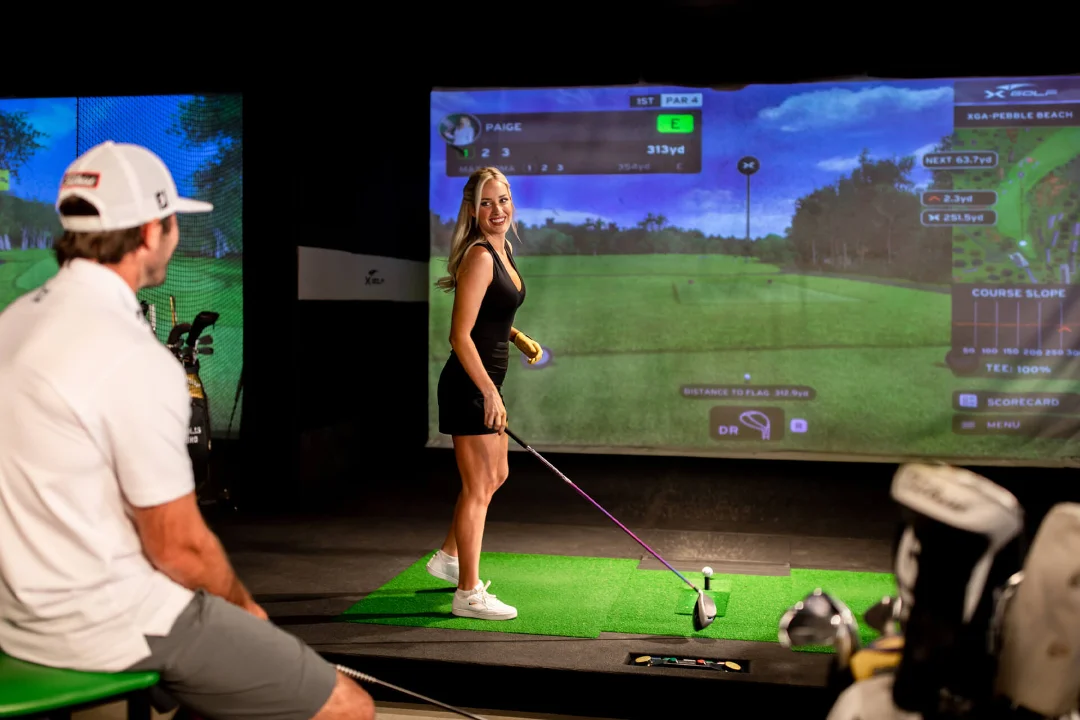
Golf simulators have redefined how golfers practice and play. Whether you’re looking to sharpen your skills, play famous courses, or enjoy golf year-round, a simulator makes it possible. But how do these systems actually work?
At their core, golf simulators track your swing, measure shot data, and use advanced software to replicate ball flight on a virtual course. The process happens in seconds—high-speed cameras, radar sensors, or infrared tracking capture details like ball speed, launch angle, spin rate, and carry distance. This data is processed, and your shot is displayed on a screen, showing exactly where the ball would have landed in real life.
But not all golf simulators function the same way. Some are designed for casual practice, while others provide professional-level shot tracking with extreme precision. Understanding how these systems work can help you decide which type of simulator best fits your needs.
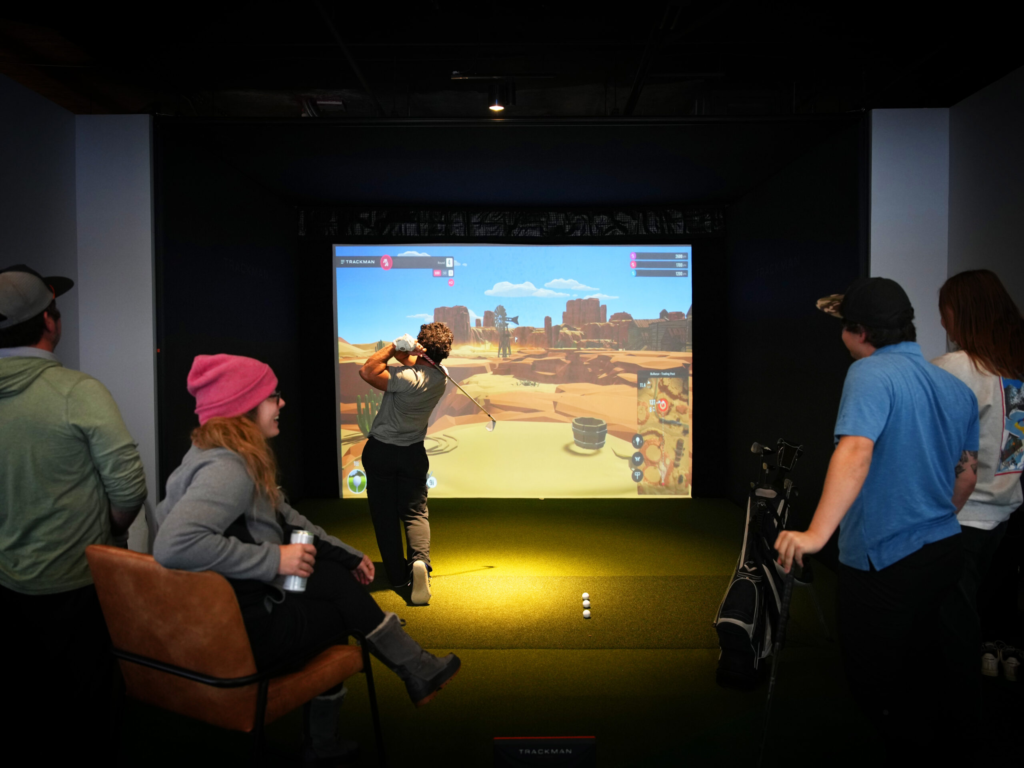
A golf simulator works by analyzing what happens the moment you strike the ball. Once you take a swing, the system records key shot data in real-time and translates it into a visual representation of your shot.
The launch monitor is the most important part of the simulator. It tracks your ball flight and club movement using different types of technology. Some simulators rely on high-speed cameras to take multiple images at impact, while others use radar sensors to track the ball’s flight path. The system collects data such as:
Once this information is captured, the simulation software calculates trajectory, roll, and shot dispersion. Within seconds, your shot appears on the screen, allowing you to see exactly where the ball would have landed on a real course.
The accuracy of this process depends on the type of tracking system the simulator uses. Camera-based systems like GCQuad and SkyTrak+ provide precise indoor shot tracking, while radar-based systems like TrackMan and FlightScope Mevo+ are ideal for outdoor practice, as they track full ball flight from launch to landing.

A simulator isn’t just about tracking shots—it’s about creating a true-to-life golf experience indoors. The best systems combine detailed shot analysis, immersive visuals, and realistic physics to replicate the feel of real golf.
The hitting mat plays a big role in realism. Some mats are designed to mimic fairway turf, while others allow you to practice from rough or sand conditions. This helps golfers train for different lies, just like they would on an actual course.
An impact screen and projector bring the course to life, displaying high-definition visuals of world-famous golf courses. Advanced golf simulator software, like FSX Play and E6 Connect, simulates real-world golf physics, taking into account factors like wind, slope, and spin.
For the most immersive experience, high-end simulators offer real-time course play, online multiplayer modes, and skills challenges, making them great for both practice and entertainment.
The best golf simulators are extremely precise, often measuring shot data within 1–2 yards of real-world distances. However, accuracy depends on several factors, including tracking technology, environmental conditions, and the type of golf ball used.
High-end systems like Foresight Sports GCQuad and TrackMan iO are trusted for tour-level precision, capturing exact club and ball data with minimal error. These simulators are used by professionals, instructors, and serious golfers who require detailed shot analysis and real-world accuracy.
Mid-range options like SkyTrak+ and Bushnell Launch Pro still offer strong accuracy, though they may have slight variations in spin rates or carry distance, especially in certain indoor conditions. While they are reliable for game improvement and simulator play, they may not provide the same level of detail as high-end models.
For the most consistent and accurate readings, it’s important to:
When properly set up, a high-quality golf simulator can replicate the feel and precision of playing on an actual golf course, making it an essential tool for year-round practice, game improvement, and entertainment.
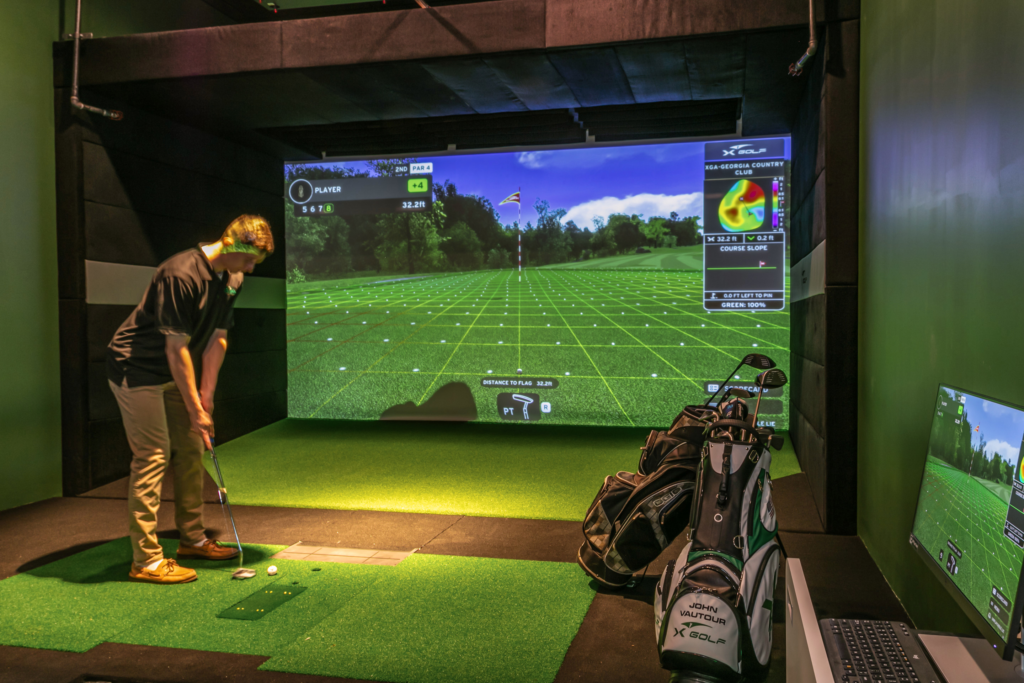
A launch monitor tracks shot data, but a golf simulator goes beyond that by creating an interactive, full-course experience. While both technologies measure key swing metrics like ball speed, launch angle, and spin rate, a simulator transforms that data into a realistic, playable round of golf on a virtual course.
Many launch monitors, including GCQuad, TrackMan, and SkyTrak+, can be used as simulators when paired with golf simulation software like FSX Play, E6 Connect, or The Golf Club 2019. However, a complete golf simulator setup includes much more than just a launch monitor.
A true golf simulator setup consists of:
A launch monitor alone is great for practice and data analysis, but if you want to play full rounds, compete in tournaments, or experience realistic on-course play, a full simulator setup is the way to go.
The amount of space required for a golf simulator depends on the type of tracking technology, the size of the hitting area, and the overall setup. Having the right dimensions ensures a comfortable, accurate, and safe playing experience, whether you’re setting up in a garage, basement, or dedicated golf room.
For most home simulators, the recommended minimum space requirements are:
The space needed also depends on the specific type of golf simulator. Some are designed to fit inThe space needed also depends on the specific type of golf simulator. Some are designed to fit into smaller areas, while others require more room for tracking and projection.

SkyTrak+ SwingBay Golf Simulator Package – This setup is ideal for compact rooms with limited space. It requires a minimum of 9 feet in ceiling height, 10 feet in width, and 12 feet in depth to provide accurate tracking. The camera-based system allows for precise indoor ball tracking without the extra space needed for radar-based systems.
Full Swing KIT Garage Golf Simulator – Designed for multi-use spaces, this radar-based system is built for garages where portability is key. It includes a retractable impact screen, allowing the space to be used for other purposes when not in use. The recommended space for optimal tracking is 10 feet in width, 9 feet in ceiling height, and at least 15 feet in depth to accommodate radar tracking requirements.

Foresight Sports GCHawk SIG12 – Overhead-mounted tracking eliminates the need to reposition the launch monitor, making it perfect for left- and right-handed golfers. This system requires a minimum ceiling height of 9 feet and a total space of 12 feet in width and 15 feet in depth to function effectively.
TrackMan iO SwingBay Golf Simulator – A commercial-grade option built for high-traffic environments like indoor golf facilities, country clubs, and training centers. It features advanced radar and optical tracking for unmatched accuracy. The required space for proper operation is at least 10 feet in width, 10 feet in ceiling height, and 16 feet in depth to accommodate full ball flight tracking.
Choosing the right simulator for your space ensures a realistic experience, precise tracking, and long-term usability.
The price of a golf simulator depends on tracking technology, software compatibility, and the overall realism of the experience. Simulators range from budget-friendly setups under $5,000 to high-end systems costing $20,000 or more.
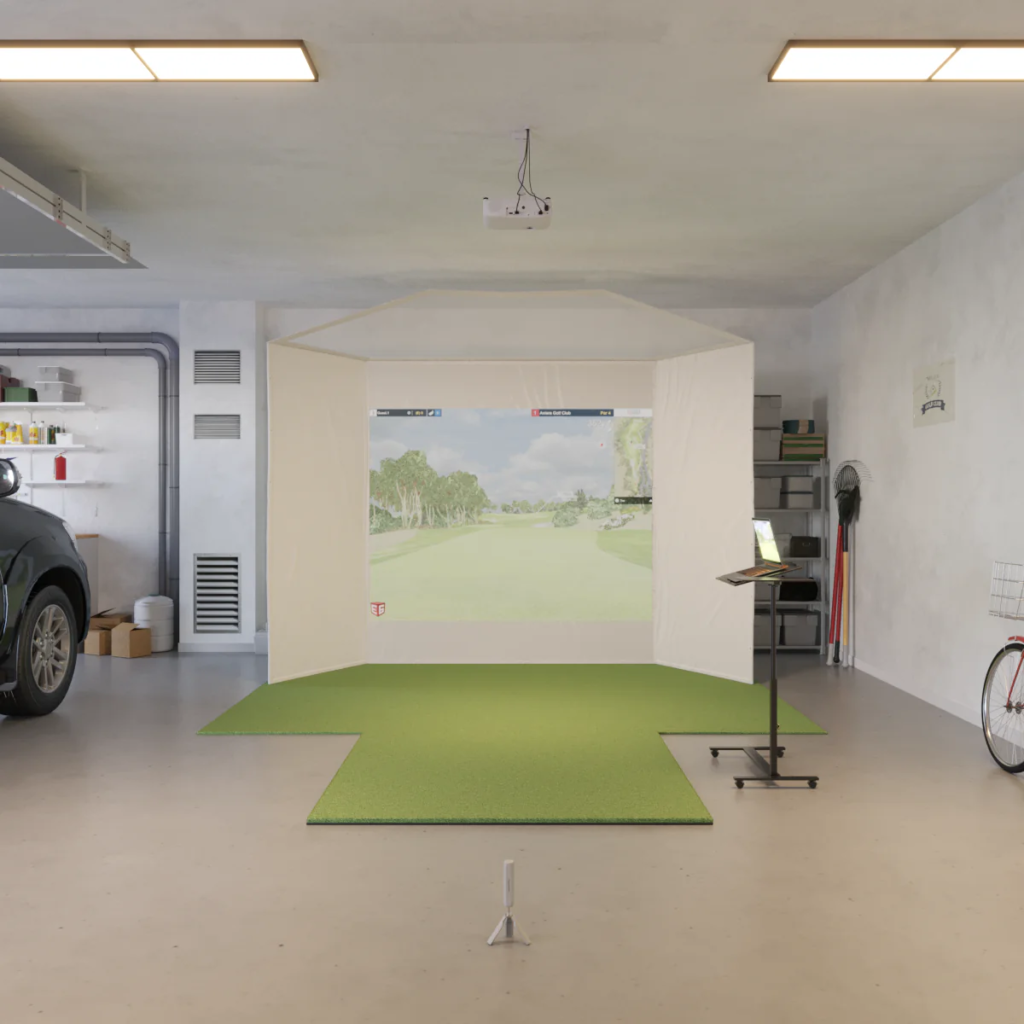
Practice anywhere with confidence. The Rapsodo MLM2PRO Retractable Package combines pro-level shot tracking, instant feedback, and a space-saving design. Perfect for golfers who want a high-quality simulator setup that’s easy to store.
Entry-level golf simulators focus on basic shot tracking and entertainment rather than pro-level accuracy. These are great for casual golfers looking for a fun indoor setup without spending too much.
Some of the best options in this price range include:
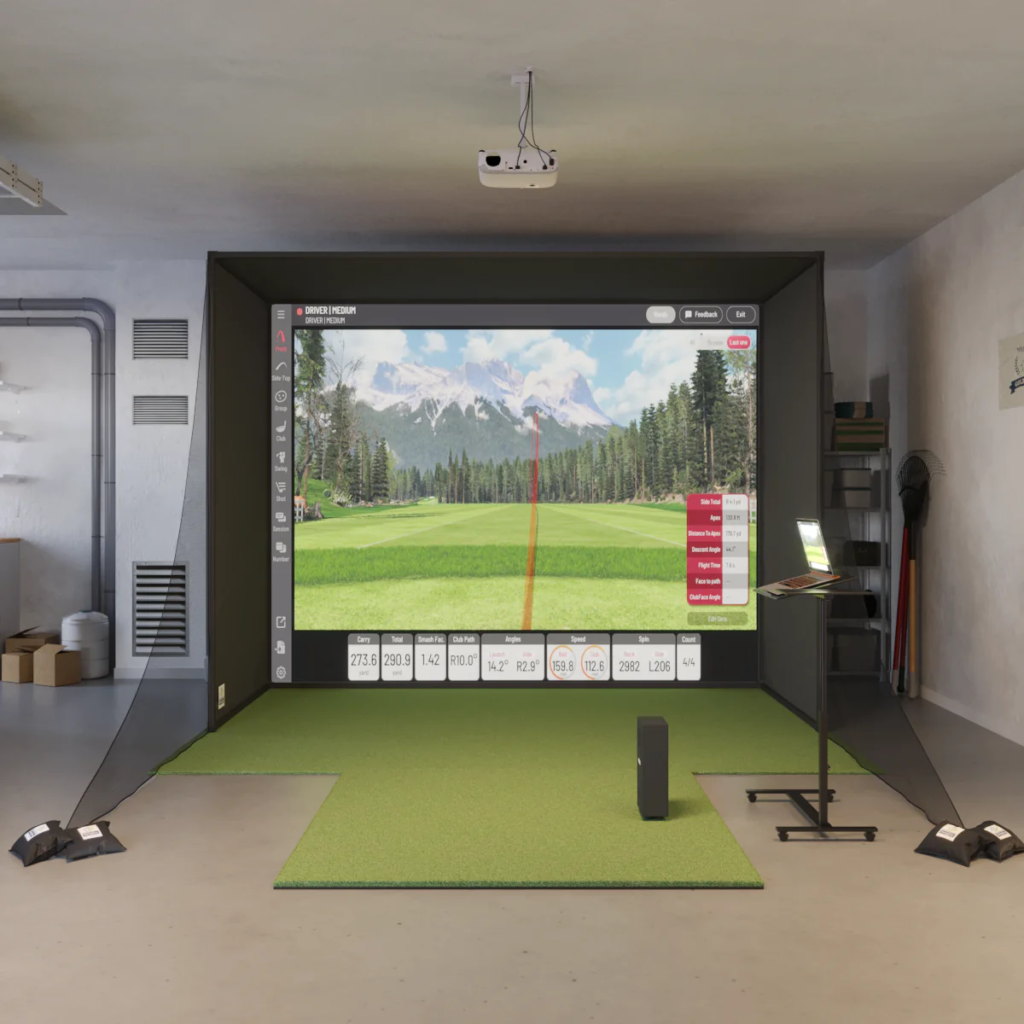
Upgrade your home setup. The Uneekor EYE MINI Lite SwingBay Golf Simulator Package delivers accurate shot tracking, instant feedback, and a premium enclosure for a true-to-life experience. Perfect for golfers who want high-quality performance in a compact space.
Mid-tier simulators offer better accuracy, realistic shot tracking, and compatibility with premium golf simulation software. They often include higher-end launch monitors and durable enclosure systems.
Top choices include:

Experience tour-level accuracy at home. The Foresight GCQuad SwingBay Golf Simulator Package combines the industry-leading GCQuad launch monitor with a premium enclosure for a top-tier simulation experience. Perfect for golfers who want the best in data tracking and realism.
These simulators are built for businesses, instructors, and serious golfers who demand tour-level accuracy and an immersive playing experience. They come with advanced launch monitors, premium enclosures, and realistic course software.
Top options include:
For serious golfers and business owners, investing in a premium simulator ensures unmatched accuracy, an immersive experience, and long-term durability.
A golf simulator works by tracking your swing, analyzing ball and club data, and creating a realistic virtual representation of your shot. Whether you’re using high-speed cameras, radar sensors, or infrared tracking, these systems provide incredible accuracy and a true-to-life golf experience.
For golfers who want to train smarter, play iconic courses, or just have fun year-round, a simulator offers the ultimate convenience. With options for every budget and skill level, there’s a perfect golf simulator for everyone.
Thinking about getting a golf simulator? Find the right system and start improving today!